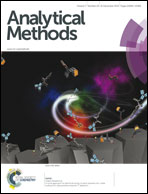Application of electron paramagnetic resonance spectroscopy, Fourier transform infrared spectroscopy-attenuated total reflectance and scanning electron microscopy to the study of the photo-oxidation of wool fiber
Abstract
An investigation into the influence of ultraviolet-irradiation (UV) on wool fibers was performed using Electron Paramagnetic Resonance (EPR) Spectroscopy, Fourier Transform Infrared Spectroscopy-Attenuated Total Reflectance (FTIR-ATR) and Scanning Electron Microscopy-Energy Dispersive Spectrometry (SEM-EDS). Using the SEM-EDS and FTIR-ATR spectra, it was determined that there are other components which precipitate out of the fibers and the precipitated elements were related to the S element, which indicated that cysteine residues were involved during the degradation procedure. The EPR spectra of the UV radiation exposed wool fibers and untreated wool fibers showed a characteristic absorption peak centered at the highly isotropic g = 2.0029 ± 0.0005 with the peak-to-trough width (∼1 mT) and without hyperfine structure, which turned out to be carbon radicals.


 Please wait while we load your content...
Please wait while we load your content...